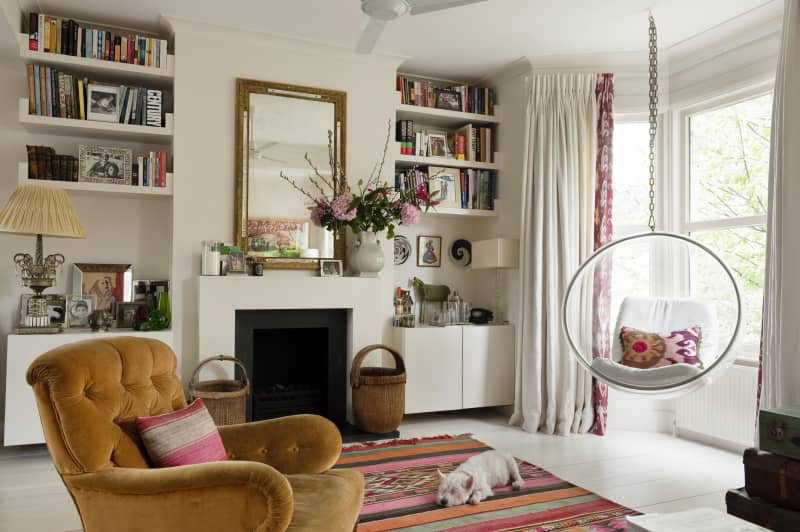5 Things Designers Say You Should Skip at the Thrift Store

Whether you’re decorating on a budget or looking for some truly unique, one-of-a-kind pieces to style your space, a thrift store can often feel like a true shopping treasure trove. As much as I love a good thrift haul and piling my cart high with fun finds, certain secondhand items might not be the best fit for your home or lifestyle, regardless of the low price tags.
“Thrift store shopping is an incredible resource that has both pros and cons,” says Hannah Kirk, an interior designer and owner of California-based home goods shop Kirk’s. While thrifting allows you to maximize your design dollars and shop more sustainably, it also requires a certain level of patience — and occasionally a fair amount of time and effort to bring items back to mint condition. “Sometimes, a chair needs to be reupholstered, or a lamp may need a new coat of paint,” adds Kirk. Surprisingly, some dated thrifted pieces even come with additional safety and cleanliness concerns you might not be aware of, too. So it all comes down to knowing what might be too far gone for you to bring home and use without any tinkering — and what you have the bandwidth for repairing.
What Not to Buy at a Thrift Store
To help you out on your next thrifting adventure, I spoke to a couple of interior designers to identify several items you should be cautious of buying used, including one that’s very popular on TikTok right now.
Upholstered Furniture
Thrift stores often carry a variety of fabric-covered furniture, including couches, accent chairs, headboards, and stools. However, Kirk says it’s best to avoid these pieces — especially ones that can’t be cleaned or have dated-looking materials — unless you plan to reupholster or professionally clean them. Additionally, some vintage fabrics could have been treated with harmful chemicals that you wouldn’t want to bring into your space. So if you’re going to source upholstered pieces from the thrift store, proceed with caution.
Retro Appliances
Kirk says to only purchase retro appliances if you plan on using them solely for decor. “There is no point of reference for the state of the electric or heating components, and it is best to avoid these unknowns in the kitchen,” she explains. If you still want to lean into these old-school-looking pieces, consider purchasing new replicas inspired by vintage designs, like a SMEG electric kettle, a Mueller retro toaster, or a KitchenAid Artisan stand mixer.
Cookware
According to Alex Bass — an interior designer, art curator, and founder of New York-based gallery Salon 21 — thrifted cookware is “not sanitary” and “whatever coating that made it useful to begin with is probably removed.” While the secondhand prices are a little hard to beat, you can still find reliable, budget-friendly sets from stores like HomeGoods, Marshalls, T.J.Maxx, and Amazon. Cast iron pans are one exception to this rule, though. Just be sure to assess their condition and research how to properly refurbish them before you buy one.
Vintage Crystal and Glassware
TikTok loves a good vintage crystal and glassware find. But, Bass says to be mindful of these popular thrift items dominating your social media feeds, as some of them have high traces of lead and can be toxic if you drink or eat from them. “You should get a lead testing kit to make sure you can actually drink out of the piece,” she says. “Otherwise, it can just be decorative.”
Rugs
It’s no secret rugs can get expensive, so it’s always exciting finding a stylish vintage or thrifted style. That being said, rugs are similar to upholstery, and, according to Bass, often not worth buying since “you don’t know where these have been and what bacteria they can carry.” If you do find the vintage rug of your dreams at a good price, though, you can pay to have it professionally cleaned. And, in some cases, thrift stores might also carry brand new rugs, too.
How to Find Quality Pieces at Thrift Stores
Now that you know what to potentially avoid at thrift stores, experts also weigh in with tips for finding some of the best high-quality secondhand pieces. Here’s how you can train your eye and be a tad more intentional about what you thrift.
Expertise
The ultimate hack for finding quality pieces at thrift stores is to go with an expert in your circle if possible. “You want to make sure what you’re buying is authentic (if that is something you are concerned about) and that you are getting what you are paying for,” says Bass. Or, if you don’t have that option, she suggests using your phone for quick research. “You can always look up a specific style and time period to educate yourself on vintage, which can become a time-consuming yet fun pastime,” she adds.
Details
Kirk also recommends looking for identifying details on certain pieces, like the artist’s signature or manufacturer’s information (which you can usually find on the underside of furniture). “You’d be surprised at how often designer furniture is dropped off without a second thought,” she notes.
Material
When you’re shopping for decorative things, Kirk says to consider the material, too. For items like thick glass, antique brass, or sterling silver, if they feel weighted, it’s typically a sign of good quality. “Copper is also a material to keep an eye out for — it is a high-value metal and is a timeless keepsake,” she adds.

